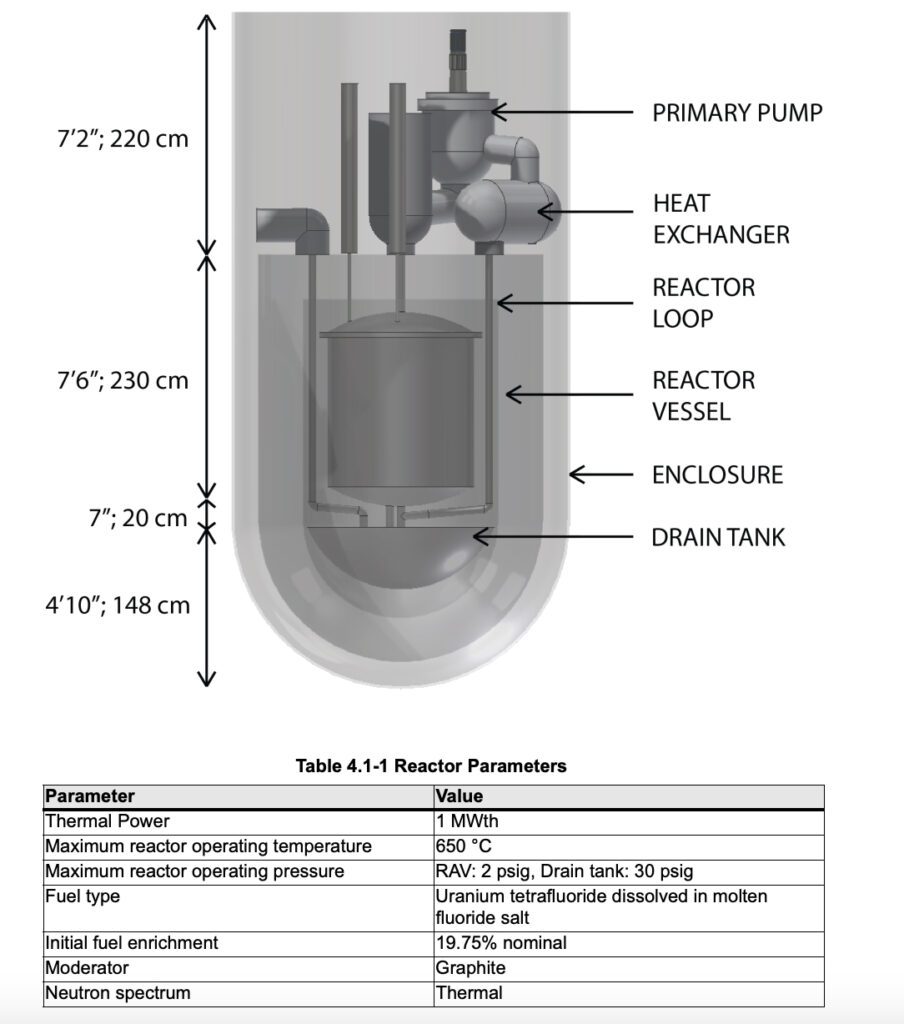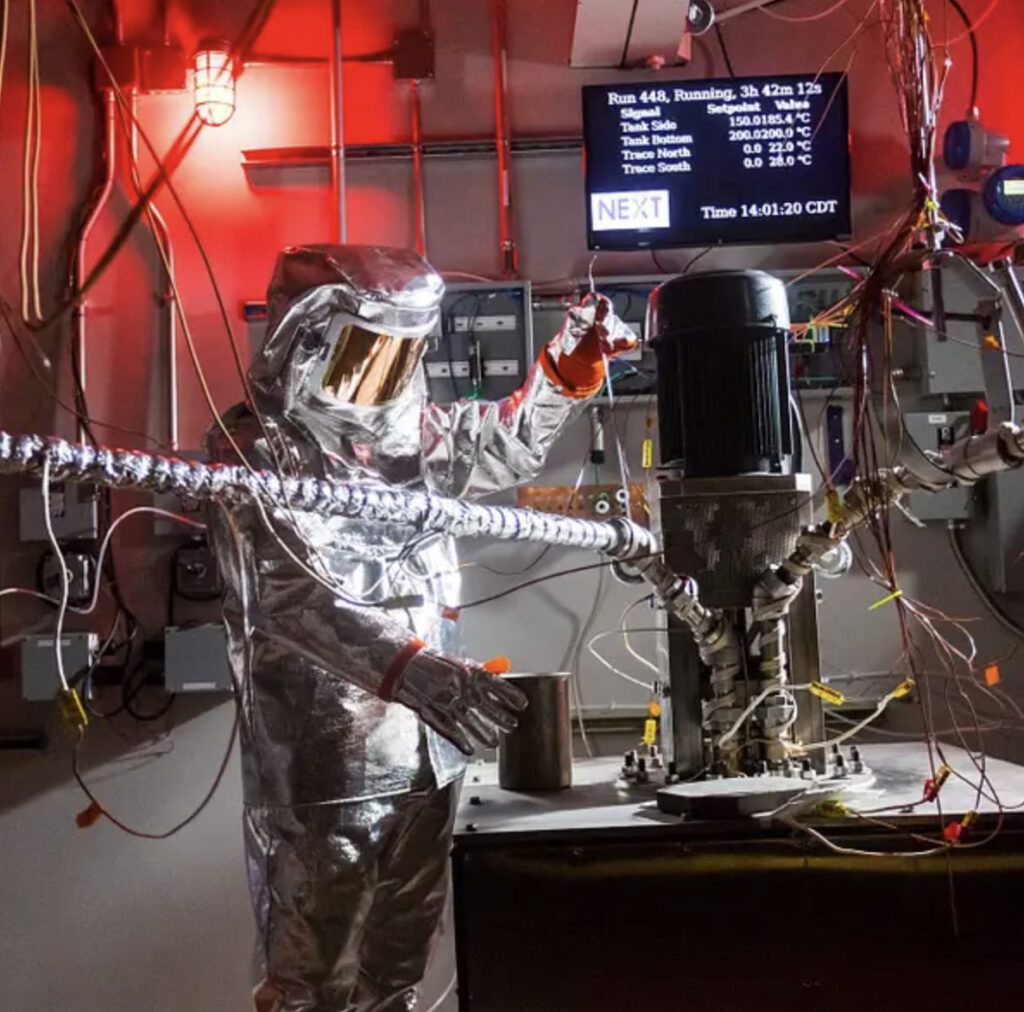ACU Secures NRC Permit to Build Research Molten Salt Nuclear Reactor
The Nuclear Regulatory Commission (NRC) has granted Abilene Christian University (ACU) a construction permit to build its Molten Salt Research Reactor (MSRR) facility on the university’s campus in Texas. The approval is the regulatory body’s first for a liquid-fueled advanced reactor, the first for a research reactor in decades, and its second for any advanced reactor.
The NRC’s construction permit, immediately effective as of Sept. 16, authorizes ACU to build Natura Resources’ MSR-1 system in the Gayle and Max Dillard Science and Engineering Research Center building on the ACU campus in Abilene. Established by oilman and energy expert Doug Robinson, Natura has spearheaded the licensing effort alongside ACU’s Nuclear Energy eXperimental Testing (NEXT) Laboratory, Georgia Institute of Technology, Texas A&M University, and The University of Texas at Austin.
ACU will now continue working with Natura to submit an operating license application while Natura completes the MSR-1’s detailed design. The entities expect to submit an operating license in the first half of 2025.
A Small But Potentially Mighty Research Reactor
The MSRR, a “utilization facility” dedicated to accelerating the development and deployment of molten salt reactor systems (MSR), will mark the first deployment of Natura’s MSR-1. The low-power reactor (of less than 1 MWth) has a “single-region, graphite-moderated core, loop-type, thermal-spectrum reactor with a fluoride-based fuel salt flowing through 316H stainless steel fuel circuit components,” ACU’s NEXT Lab says in its application.

“A cooling loop with flowing, fluoride-based salt is used to cool the fuel circuit and expel the heat to the atmosphere,” it explains. “The MSRR is equipped with an off-gas system that can relocate fission gases from the reactor headspaces through stainless-steel circuit components for sequestration and decay. The low-power MSRR is designed to be passively safe. It relies on intrinsic properties of molten salts and engineered safety features to ensure safe and reliable operations.”
The fuel salt, operating at a maximum temperature of 650C, will contain a mixture of lithium fluoride, beryllium difluoride, and uranium tetrafluoride (LiF-BeF2-UF4 with a molar ratio of about 67:28:5). It will use high-assay, low-enriched uranium (HALEU) with an U-235 enrichment of 19.75% and 99.99% enriched in Li-7.
MSRR salts are highly ionic, chemically stable compounds that are immune to radiolysis, the university has noted. While chemical inertness eliminates the risk of fire or explosion, molten salts offer a suitable medium for heat transfer. “The MSRR salts are stable to several hundred degrees above temperatures obtainable in the reactor and remain at low vapor pressure,” it said. “The melting point of the fuel salt is about 500C (932F), and the melting point of the coolant salt is about 460C (890F). The MSRR’s large negative temperature coefficient and reactivity that passively moderates heat production also allow for a “significant” load-following capability, it said.
The MSSR will also be used to educate and train a new generation of operators, engineers, and scientists “who will be uniquely prepared to contribute to the advancement and deployment of MSRs and applications,” ACU said. “The research will generate dynamic, time-dependent, experimental MSR data to advance the understanding of reactor kinetics, fuel salt behavior, corrosion, and migration and behavior of fission products throughout the system, all of which can be used to validate and calibrate software for the design, licensing, and regulation of commercial MSRs.”
Another Advanced Reactor Licensing Milestone
The licensing milestone is notable, given that the NRC accepted ACU’s application (under 10 CFR 50.2 of the Code of Federal Regulations) to build the reactor in November 2022. While ACU submitted updates in November 2023 and July 2024, the NRC issued its final environmental assessment for the site on March 7, 2024, and the final safety evaluation for the permit on Sept. 16.
“This is the first research reactor project we’ve approved for construction in decades, and the staff successfully worked with ACU to resolve several technical issues with this novel design,” said Andrea Veil, Director of the NRC’s Office of Nuclear Reactor Regulation. “Going forward, we’ll have inspectors on the ACU campus when construction gets started.”
The NRC in December 2023 granted its first construction permit for a non-water-cooled reactor in more than 50 years to Kairos Power for the company’s 35-MWth Hermes molten salt “non-power” demonstration reactor, which the firm has proposed to build at the East Tennessee Technology Park Heritage Center (ETTP) site in Oak Ridge. Construction of the reactor kicked off in July 2024 and it is expected to be completed in 2027.
The MSRR and Hermes share similar attributes. “There are a number of similarities between the MSRR and Hermes, including a high operating temperature, a low-pressure fluoride salt loop-type cooling system, graphite and salt moderation, a novel fuel form, and power level,” ACU has noted. “Primary differences include facility construction, fuel fabrication, and power coupling system costs.”
ACU estimates, using cost-capacity scaling methods, that the MSRR’s overnight costs will likely remain under $100 million. NRC filings suggest a detailed cost breakdown prepared for the MSRR, which includes licensing, engineering, materials, modifications to the Science and Engineering Research Center (SERC), and R&D, could result in a central overnight cost estimate of $65 million, with a $30 million contingency to account for uncertainties.
For now, ACU is collaborating with the Department of Energy (DOE) to develop fuel cycle services, and it notes further fuel cycle cost estimates will be included in the reactor’s operating license application. As POWER reported in 2022, ACU told the DOE in a letter that the research reactor’s fluoride salt requirements would need “no more” than 500 kilograms (kg) of HALEU and no more than 2,200 kg of enriched lithium.
“A letter to ACU [sent in June 2024 by the DOE] affirming good faith negotiations was provided to the NRC,” ACU noted. “However, the current plan and preference of ACU is not to own the MSRR fuel but to obtain fuel as a loan from DOE. After the MSRR is decommissioned, the fuel and salt could be used on other projects and would be returned to DOE. All ACU discussions with DOE have been to obtain the fuel as a loan. There is the possibility that, in order to obtain fuel in a timely manner, ACU could purchase fuel from someone other than DOE. However, this path is not currently being pursued.”
Natura Developing Commercial 100-MWe Molten Salt Reactor System
For Natura Resources, the licensing milestone represents a major boost for its MSR-1 system, which it is working to develop into a commercial 100-MWe small modular reactor system.
The company says it has pursued an “iterative, milestone-based approach” focused on efficiency and performance” since 2020, when it brought together its university partners to form the Natura Resources Research Alliance.

In July, Natura partnered with the Texas Produced Water Consortium (TxPWC) at Texas Tech University—a state-supported research entity—to explore the deployment of its liquid-fueled molten salt reactor (LF-MSR) technology in the Permian Basin. The effort seeks to develop dispatchable energy for water treatment facilities in Texas.
Successful deployment of the MSR-1 system at the MSRR “will provide valuable operational data to support Natura’s 100 MWe systems and will also serve as a world-class research tool to train advanced reactor operators and educate students,” noted Robison, Natura founder and president.
“Natura recognized early on that the NRC is the gold standard of licensing of nuclear reactors,” he said. “We made a conscious decision to work with the NRC to license our technology for deployment here in the States rather than taking our technology outside their jurisdiction or attempting to avoid the licensing process entirely.” The NRC’s issuance of the construction permit “shows that our technology can be licensed and de-risks the licensure of Natura’s 100 MWe systems,” he said.
ACU, too, lauded the permit’s issuance. “We appreciate the thorough reviews by the NRC staff,” said Ben Beasley, NEXT Lab director of licensing, on Monday. However, he noted the construction permit is only the first step of the NRC’s two-step licensing process. “The construction permit allows ACU and Natura to build and operate the MSRR without uranium,” he said. “The next step is the operating license, which will authorize Natura and ACU to fuel the reactor and demonstrate the elegance of molten salt technology.”
Much more work remains, however, Natura noted. “The advanced reactor deployment site that will house the reactor, the [SERC] at ACU, was completed in August 2023, and the issuance of the construction permit allows the team to begin fabrication of the reactor,” it noted. Zachry Nuclear Engineering is expected to complete the detailed engineering and design of the Natura MSR-1 in the first part of 2025, “which will be followed quickly by the submission of the operating license application to the NRC,” it said.
Project partners will also need to secure adequate an fuel supply for the MSRR. The DOE “provides fuel for the current operating fleet of university research reactors, and its commitment in 2019 to provide fuel and salt for the MSRR was the impetus for Natura Resources to develop and deploy the Natura MSR-1 with ACU,” Natura noted. “The fuel and salt needs for the MSRR are unique, and Natura Resources and ACU are committed to working with the DOE to finalize details related to the provision of fuel and salt.”
—Sonal Patel is a POWER senior editor (@sonalcpatel, @POWERmagazine).